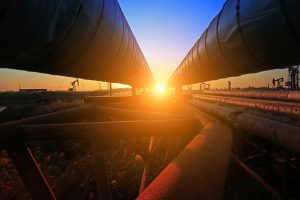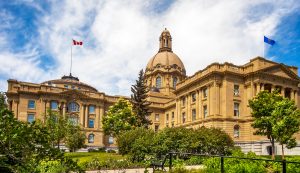Fuelled in large part by a (50%) rebound in oil prices and a concomitant increase in energy exploration (rig counts are up by 80%), the Alberta economy expanded by +4% in 2017 after back-to-back declines of -3.9% in 2015 and -3.7% in 2016. Moreover, this strong growth, the highest among the ten provinces, occurred despite the fact that the province’s energy exports were and still are being severely restricted by the previous U.S. administration’s failure to approve the Keystone Pipeline; by the Liberal government’s failure to actively support the Energy East Pipeline; and by the B.C. government’s opposition to the expansion of the Trans Mountain Pipeline.
Alberta’s labour market provides the most compelling evidence of its improved economic health. Over the past twelve months, employment in the province has increased by 45,900 jobs after contracting by 4,800 during the previous 12 months.
Since January of last year, 88,000 Albertans have found full-time employment. This gain more than offset a 43,000 drop in part-time hiring and it suggests that employers, most of whom are in the private sector, are more confident about taking on full-time staff. Although there is still plenty of slack in the labour market, the provincial unemployment rate has dropped from a recent high of 9% to 7% in just 13 months and Alberta’s job vacancy rate reached 2% in Q3/2017, its best reading since Q4/2014.
The improvement in labour demand within Alberta appears to have stemmed the outflow of migrants to other provinces. Total net migration to Alberta hit a three-year high in Q3/2017 due to the combination of positive net interprovincial migration and sustained net international migration.
Given the combination of low interest rates, solid job gains and rising consumer confidence, it is not surprising that retail sales staged a significant rebound, +15% y/y in the second half of 2017 after contracting by -4% y/y in second half of 2016.
Alberta’s housing market is also showing signs of renewed strength. Existing home sales in the province are up by 9.4% so far this year following declines of -21.3% in 2015 and -5.8% in 2016.
New residential construction has also exhibited a solid recovery with housing starts over the past twelve months up by 20% y/y. Looking ahead, while the fundamental drivers of housing demand remain positive, we expect the pace of new construction to moderate in order to absorb a record number of completed and unoccupied dwellings, the vast majority of which are located in Edmonton and Calgary. For the year, we expect starts to total in the range of 26,000 to 28,000 units compared to 29,000 in 2017.
Based on Statistics Canada’s just released Survey of Non-residential Capital and Repair Expenditures, capital spending in Alberta will contract in 2018 for the fourth consecutive year. A major contributor to the 5.3% decline in projected capital spending is the completion of the Fort Hills Oil Sands Project in 2017, the last major energy project in the province, with an estimated value of $17 billion.
While the impact of the completion of this project will be partly offset by Inter Pipeline’s Heartland Petrochemical Complex (with an estimated cost of $3.5 billion), Canadian Natural Resource’s restarting of the Kirby North Phase I project and by Imperial Oil’s Kearl debottleneck project, spending on oil and gas extraction is projected to shrink by 12.2% this year following a 6.7% drop in 2017.
While the prospects for energy projects in Alberta are very dim, they appear brighter for small- and medium-sized businesses. A recent survey by the Business Development Bank found that the investment intentions of such firms were up by 12% in 2018, the second highest increase in the country.
As has been the case for the past seventy years, since Leduc #1, Alberta’s near-term economic prospects remain inextricably linked to the price of oil and more recently natural gas. Based on this linkage and given the generally positive outlook for the global economy indicated in Economic Snapshot #4, Stock market hiccup does not signal cyclical global economic downturn, we expect gradual upward pressure on energy prices to cause Alberta to continue to grow at a healthy pace in the range of 2.5% to 3.5% this year and by 2.0% to 3% in 2019.
While the near term outlook for Alberta is relatively upbeat, the province’s longer term investment prospects are severely overshadowed by the B.C. government’s recent threat to further delay the construction of the Kinder Morgan pipeline as well as by the uncertainty created by the Liberal government’s announced Bill C-69. According to the federal government, this legislation will shorten the approval process for major energy projects. However, this claim is disputed by a number of analysts, most of whom are located in energy-producing provinces.
Real* Gross Domestic Product (GDP) Growth — Alberta vs Canada

Chart: ConstructConnect — CanaData.











Recent Comments
comments for this post are closed